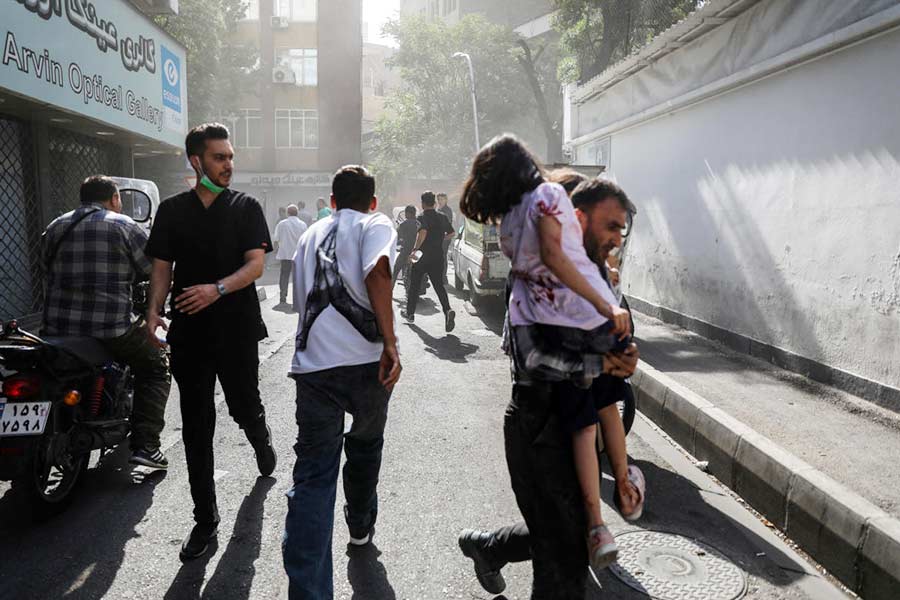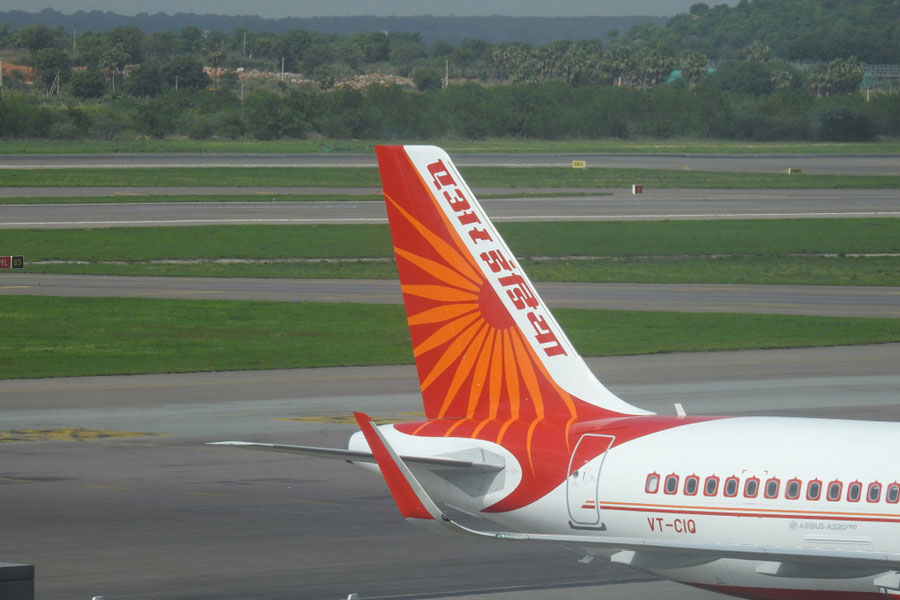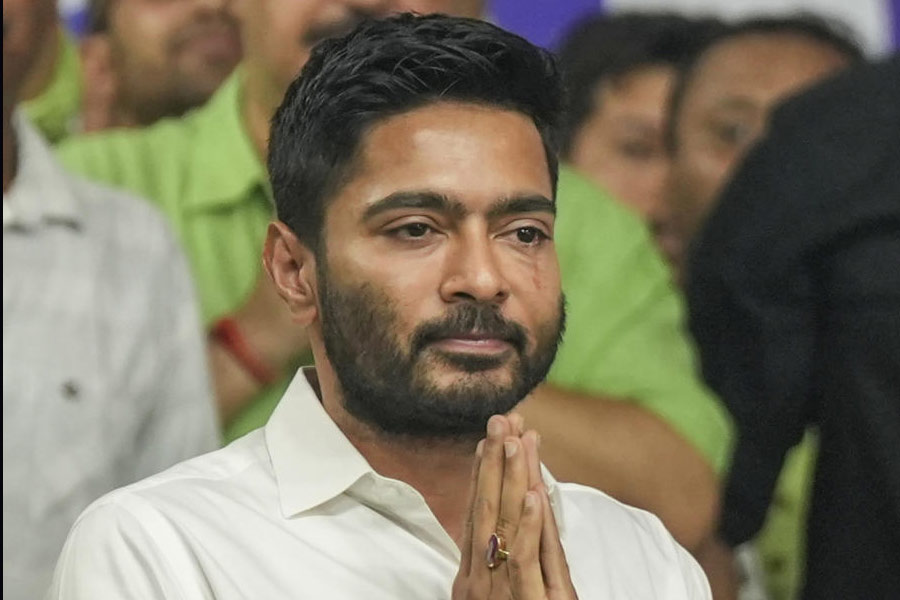
Jayanta Saha and his family members were devastated to learn that he had contracted sarcoma in the larynx. The Rabindrasangeet artiste from Midnapore town would often choke when trying to sing. He consulted doctors in Calcutta, who, in turn handed him a price chart of the cost that he would incur for treatment. A heartbroken Saha immediately decided to go to Tata Memorial Hospital in Mumbai, referred by a physician in Calcutta. Doctors in Mumbai prescribed radiotherapy and since Saha could not stay back in Mumbai, they referred him to Westbank Hospital in Howrah.

“I was referred to Dr Suman Mullick, the consultant at the radiotherapy department of Westbank Hospital and he planned my treatment. He was very encouraging and he also told me that I would start singing and also teaching Rabindrasangeet,” said Saha. For a person who could hardly speak in 2012, this news cheered him up. After 25 sittings of radiotherapy in 2013 and periodic check ups, today, Saha indeed performs in public programmes and also teaches students at home.
It is the dreaded ‘C’ word that brings a lump to the throat of those who are diagnosed with carcinoma. Innumerable questions cloud the mind, the pertinent ones being the terminal factor of the disease, time and cost of treatment. Not everyone is as lucky as Saha to get back to almost normal life. In West Bengal, most cancer patients first go to Mumbai for treatment. However, over the years, cancer treatment facility centres have come up in Calcutta and the suburbs. While some are integrated centres, others offer only some facilities. In Calcutta, cancer treatment is done at Saroj Gupta Cancer Centre and Research Institute in Thakurpukur, Apollo Gleneagles Hospital in EM Bypass, Tata Medical Center in New Town and government hospitals like Chittaranjan National Cancer Institute.

On the west bank, cancer treatment is even more scarce. Howrah District Hospital, the only government hospital that caters to the poorest of the poor, has no treatment facilities apart from an oncologist on its board. He sits in the Outdoor Patient Department and patients visit him but there are no cancer drugs available at the fair price shop nor are there any radiation or chemotherapy units at the district hospital.
Shree Jain Hospital and Research Centre in Shibpur is gearing up for cancer treatment. The hospital will be tying up with a multinational company to start a cancer care centre in Howrah. “We have already got the relevant permissions for starting the scanning and radiation centre. The cost of developing the centre is about Rs 20 to 25 crores,” said Pradeep Patwa, the secretary of Shree Jain Hospital and Research Centre. The radiotherapy unit will have a PET CT scanner and Intensity Modulated Radiotherapy (IMRT) machine for providing radiation. Cancer patients who come to the outdoor department can consult an oncologist. Chemotherapy is also provided at the hospital but patients are generally referred to hospitals like Chittaranjan National Cancer Institute or to other private hospitals for radiotherapy and advanced treatment. “We hope to provide more integrated treatment to cancer patients in Howrah, once the centre starts next year,” said Patwa.
Westbank Health and Wellness Institute at the junction of Andul Road and Vidyasagar Setu, is trying to develop a comprehensive cancer care centre at the heart of Howrah town. It is now called Narayana Superspeciality Hospital, after Narayana Health acquired both units of Westbank in 2014. The institute equipped with radiotherapy, chemotherapy units, a rehabilitation centre, palliative care and cosmetic surgery unit, have further plans of starting a bone marrow cancer unit and a blood bank within the hospital.
Narayana’s radiotherapy centre includes both external and internal radiotherapy units. A linear accelerator (LINAC) has replaced the telecobalt unit. “The LINAC administers radiation to the affected area, causing less damage to the surrounding areas of the tumour,” said Dr Suman Mullick. Internal radiotherapy or brachytherapy is also done here. “A hollow catheter is inserted into the tumour and the radiation happens through the catheter. This type of radiotherapy also reduces damage to other structures around the tumour and is used for deep-seated tumours in internal regions like cervical and prostate cancer,” added Mullick.

When the cancer unit was started in 2011, radiation and chemotherapy units were in the two different hospitals of Westbank. Since 2013 the two have come together under one roof. The treatment plan for any patient is made in consultation with other specialists. “There are a number of doctors in the cancer care centre and all relevant specialists are consulted when taking any decision about a patient. Sometimes complex cases are discussed with other specialists from Bangalore,” said Dr Arunanshu Kar, consultant, medical oncology at Narayana.
Although cancer treatment is being upgraded worldwide, including in India, oncologists and physicians feel there is still a huge lack of awareness about the disease. “The problem in our country is the social stigma about cancer and also the continuous self-denial among people about the fact that they can be affected by this dreadful disease. The World Health Organisation (WHO) had predicted nearly a decade back that one out of four people will be affected by cancer. Today, the rate at which cancer is spreading through the population, we are nearly there,” said Kar.

Dr Sourav Datta, consultant, head and neck onco surgery at Narayana has just joined the hospital a few weeks back. “I was with Tata Memorial Hospital in Mumbai before coming here and I was a part of the anti-tobacco campaign that the hospital conducted to ban gutkha. It is seen that head and neck cancer, in the form of oral cancer, is, by far, the most common type of cancer in India. It is the seventh most common cancer in the world and its highest occurrence is in India because most people here chew tobacco. The strange thing is that, even though, oral cancer is visible, in the form of an ulcer or tumour forming in the mouth, people still choose to ignore it. They consult a doctor at an advanced stage,” said Datta. “Lung cancer is also on the rise because of smoking. However gruesome pictures are printed on cigarette packs and price of cigarettes are hiked, people still do not give up smoking. Calcutta and Howrah top the number of lung cancer patients. What patients do not realise is that time is the primary factor in cancer treatment. The disease can be cured if treatment starts early,” said Mullick.
There are many referred cases from Tata Memorial Hospital at this hospital. “The waiting list at that hospital is so long, that they have been forced to send patients from Calcutta, Howrah and nearby areas to this hospital to reduce the pressure and the waiting time for these patients,” said Datta. “Nearly 15 per cent of cancer patients coming to us are from Tata Memorial Hospital. Apart from that, we also get patients from Bangladesh and Myanmar,” said Mullick. Such was the case of Debi Basu from Tribeni, Hooghly, who had been diagnosed with uterine cancer. The 62-year-old had to undergo a hysterectomy. During surgery, an abnormal growth was detected. The biopsy report showed that she had Stage I carcinoma. “I took her to Mumbai immediately, but found that I would not get an appointment before two-and-half months. The doctors there referred me to Apollo Hospital and Westbank in Howrah. I met Dr Suman Mullick at Westbank and he suggested a treatment plan for my wife. My wife needed radiation everyday along with chemotherapy. In the later stage, two internal radiations were also given to her,” said Hirendra Kumar Basu. Debi Basu is now fit and can do her daily chores without trouble.

Doctors at Narayana stress on day care instead of admitting patients into the hospital. “Only very critical patients are kept at the hospital. We can accommodate 12 patients at the day care centre at one time. We prefer sending the patient back home so that he or she can spend more time with family,” said Kar.
Apart from rehabilitation and cosmetic surgery, which is applicable mainly in oral or breast cancer, palliative care is an important area in cancer treatment. “The pain can be intolerable in most cases after radiation or chemotherapy. It is important to take measures to keep the patient as comfortable as possible,” said Mullick. A strong backup system in other areas is also necessary. “The cardiac, nephrology and other departments support us in dealing with side effects of radiation or chemotherapy. This is essential because no one can predict what other problems will arise in the patient while undergoing such high dosage of radiation or chemotherapy,” said Kar.
A universal problem of cancer treatment is the cost. “Patients coming from the underprivileged section are the ones who suffer the most because of the cost of treatment. The hospital management tries to give as much discount as possible. We also try to subsidize the cost of medicines for such people,” said Kar. Datta, however, feels that the cost has been kept competitive. “In my department, for example, a person can undergo treatment for oral cancer, including surgery, radiotherapy, chemotherapy and medication for Rs 1 lakh. In case of reconstruction or cosmetic surgery the cost goes up to Rs 2 lakh,” said Datta.
Hirendra Kumar Basu, who runs a medical store at Tribeni, felt that the cost was not too steep. “Although the cost of treatment is rising now, I had to spend close to Rs 50,000 for my wife’s treatment in 2013 in Westbank, which was affordable.”
Prevention is always better than cure and oncologists and oncosurgeons also insist on being careful. The hospital authorities are trying to spread awareness among common people. A Cancer Combat Clinic has come up two weeks back at the hospital. This has been introduced as the first second opinion clinic in cancer treatment. “The purpose of this clinic is for patients who want a second opinion about the disease and want to know what to do. Also people who apprehend that they can have cancer in future can also walk in to consult doctors and take precautions,” said Kar. There are several awareness campaigns by the hospital. “We distribute pamphlets on cancer awareness among common people. Not just locally, we also want to work in the rural belt where there is even less awareness about cancer. We plan to come up with pap smear kits that will be distributed among NGOs working in the rural belt where women can do free tests for cervical cancer,” said Mullick.











